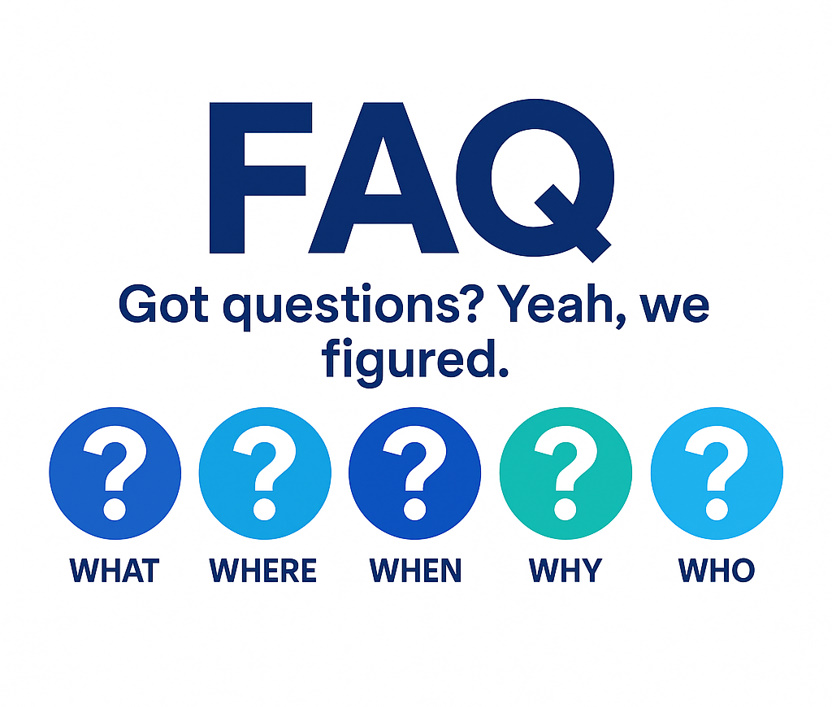Updated 15 April, 2025
Should I sell my products at a loss just to attract initial customers?
Selling at a loss (or “buying” customers) is a risky strategy and usually not sustainable. Some new sellers think that by offering super cheap prices, even below cost, they’ll lure in a bunch of customers and then later raise prices or sell other items to make money. In practice, this can backfire. While occasional promotions or loss-leaders can work, as a small business you have to ensure it’s part of a real strategy. If you price items so low that you lose money on each sale, you need to have a clear plan for lifetime value (LTV). For example, you’re willing to take a small loss on a first purchase if you know a high percentage of customers will buy again or subscribe to something later. But if you’re just starting out, you might not have that data or a back-end offer to recoup the losses. It’s usually better to compete on value rather than just price. Think about offering introductory discounts or freebies that don’t break the bank: for instance, “buy one, get one 50% off” or a free small gift with an order. These can attract customers without devaluing your main product too much. A slight loss on a controlled promotion can be okay as a marketing expense, but don’t make it your everyday strategy or you’ll burn through your capital fast. Focus on delivering value and good experience, and you’ll find the right customers for your .shop.
Can I legally resell branded or trademarked products without permission?
In general, if you’ve legally purchased authentic goods, you have the right to resell them thanks to the first-sale doctrine. You don’t need the brand’s permission to resell official products, as long as they are genuine and you aren’t dealing in counterfeits. However, be careful how you market them and avoid using the brand’s logos or trademarks in a way that implies you’re affiliated or an authorized dealer. Stay honest in your listings and you can usually safely sell clearance or wholesale products on your own .shop or online site.
What should I do if I receive a trademark infringement notice or cease-and-desist?
Take it seriously and act quickly. If a brand or platform (like Shopify or Amazon) notifies you that something on your store infringes a trademark, the safest move is to stop using the offending name, logo, or product immediately. That might mean renaming a product, removing a listing, or changing your shop’s branding if it conflicts with someone else’s trademark. Small businesses rarely win fights with big brands, so it’s usually best to comply (and consult a lawyer if you truly believe it’s a mistake) rather than risk legal trouble or having your ecommerce shut down.
Why is PayPal holding my money for 21 days after my first sale?
Don’t worry, this is a common issue for new sellers. PayPal often places a 21-day hold on funds from new or inexperienced accounts as a security measure to ensure orders are fulfilled (it’s meant to prevent scammers from taking the money and running). To get your cash faster, provide tracking information and mark orders as shipped; PayPal may release funds a bit sooner once it sees the item is delivered or the buyer left feedback. After you build up a history of successful sales over a few weeks, these holds should happen less and your money will transfer more quickly.
Why are my Shopify or Stripe payouts delayed or frozen?
Payouts through Shopify Payments (or Stripe) aren’t instantaneous, they typically take a few business days to reach your bank. For new accounts, the first payout can take up to a week. If you see a payout marked “Paid” but nothing in your bank yet, it’s likely still processing through the banking system. However, if Shopify suddenly froze your payouts for an account review, it means their risk system flagged something (common for new stores or a spike in sales. Check your email for any verification requests, and respond with the info they need. Usually, providing documents and patiently working with Shopify Support will resolve a freeze, and afterward your payout schedule will resume as normal.
How can I manage shipping costs that are higher than my product price?
High shipping costs on a low-priced item can quickly kill your profits. Many new sellers discover that selling a $1.95 product might not make sense if it costs $5 or $10 to ship it. To manage this, consider adjusting your pricing strategy: you could raise the product price a bit and offer “free” shipping, or require a minimum order so that the average order value absorbs the shipping cost. Some entrepreneurs bundle items (or sell multipacks) to make the shipping fee per item more reasonable. The key is to either negotiate cheaper shipping options or build those costs into what the customer pays.
How do I handle very long shipping times (like 2–4 weeks) without upsetting customers?
The best approach is transparency. Let customers know before they purchase if shipping may take two to four weeks. For example, mention the estimated delivery timeframe on the product page or at checkout. Setting the right expectations upfront will reduce the number of angry emails later. If an order is already delayed, communicate proactively: apologize and give the customer an update, including any tracking info you have. Many shoppers will be patient if you’re honest and keep them in the loop. Long term, if 20+ day shipping is hurting your business, you might explore faster suppliers (or local inventory) for popular items, even if it costs a bit more, to keep customers happier.
How can I compete with Amazon’s prices and fast shipping as a small store?
In truth, you usually can’t go head to head with Amazon on two-day shipping and rock-bottom prices for generic products. Instead, focus on what Amazon can’t offer: sell unique or niche products, build a compelling brand, and provide personalized customer service. People will shop at your shop if you give them a reason beyond price. For example, maybe your product is handmade, customized, or hard to find elsewhere, or you offer a community or expertise that Amazon doesn’t. Make sure to set clear expectations and consider offering perks like a thank-you note, small freebie, or responsive support to add value. You want customers to feel that supporting your small business (at maybe a slightly higher price or longer wait) is worth it because they get something special in return.
I’m getting traffic but no sales- why isn’t anyone buying?
This is a frustrating situation many new .shop owners face. If you’ve had a few hundred visitors and add to carts with zero purchases, there could be a few things going on. First, make sure the traffic is actually relevant, friends clicking the link or random visitors won’t buy if they’re not your target audience. Assuming the visitors are interested in your type of product, a lack of sales usually means some part of your site or offer isn’t convincing them to purchase. Common issues include: a website that looks unprofessional or untrustworthy (check for things like a sloppy design, lack of SSL or contact info), confusing navigation or checkout process, or product pages that don’t clearly show the value of the product. Price and shipping could be factors too, if your item is much more expensive (or shipping is slower) than competitors, shoppers may hesitate. Experienced sellers suggest treating each visitor “like gold” by giving them a smooth, easy shopping experience. Ensure your site loads fast, works well on mobile, and has clear product photos and descriptions. Sometimes it’s just a numbers game (even a decent .shop might convert only 1–2% of visitors), but if zero out of 200+ are buying, take a hard look at your shop’s design, trust signals, and whether you’re attracting the right audience.
Is ecommerce really a passive income business?
Not at the start. The idea of setting up a Shopify store and just watching money roll in while you relax is a myth. In reality, running an online shop requires active effort: you’ll be tweaking your website, adding products, handling marketing, responding to customer inquiries, fulfilling orders, etc. It’s not “set it and forget it”, there’s always something to optimize or fix or promote, especially in the early stages when you’re wearing all the hats. Over time, you can streamline and outsource parts of the business (for example, using apps or hiring help for logistics and marketing), which might make it feel more hands-off. But expect to be actively involved in your business if you want it to grow, even automated systems need monitoring and fresh strategies to keep sales coming. The bottom line: ecommerce can provide flexible income, but it’s like any business, the success is proportional to the work and smart decisions you put into it.
Should I use a custom domain for my store instead of the .myshopify.com address?
Absolutely, yes. Upgrading to a custom domain (like yourbrandname.shop or yourbrandname.com instead of yourbrandname.myshopify.com) is highly recommended once you’re serious about your business. It makes your business look more professional and establishes a trustworthy brand identity. A lot of customers might be hesitant if they see the default “myshopify” URL, as it looks more like a trial site. A custom domain is relatively inexpensive and easy to set up through Shopify or a domain registrar like Porkbun (which we set up on as well!), and it instantly gives your shop a polished feel. Plus, a domain like YourBrand.shop can subtly reinforce that you’re an actual shop and not just a random website. Given how important trust is in ecommerce, this small investment pays off by making shoppers more confident that you’re a legit business.
How can I keep my personal information (name and address) private on my store?
Many new sellers worry when they realize their personal details might show up to customers. For example, on credit card statements or in the “Contact Us” info. To protect your privacy, you should set up your business information in place of personal info. In Shopify Payments (or whatever payment gateway you use), you can usually specify a business name as the statement descriptor, so that customers see your Brand Name instead of, say, your own name on their bill. It’s also wise to get a P.O. Box or mail forwarding address for your business, so you’re not listing your home address publicly (you can use that for returns or contact info). As your brand grows, consider forming an LLC or business entity as this lets you use the company’s name and address for public-facing details, adding a layer of privacy and professionalism.
What is the $1 charge from “shopify-charge.com” on my card statement?
Seeing a mysterious $1 (or sometimes $0) charge referencing Shopify can be confusing. In most cases, this is not a scam, it’s just a temporary authorization Shopify uses to verify a credit card. It’s similar to how gas pumps or Uber might do a small hold that never actually captures. If you haven’t interacted with any Shopify shop at all and still see a charge like that, it could be a fraudulent card test (some scammers try small charges to see if a card works). In that scenario, you’d want to report it to your bank. But if you’re a Shopify shop owner or customer, a pending $1 from “shopify-charge.com” is usually just a routine card authorization that will drop off and not actually cost you anything.
How much inventory should I start with for my online store?
When you’re just starting out, it’s smart to keep inventory levels low until you validate what sells. You don’t need a warehouse full of goods on day one. In fact, overbuying is a classic and costly rookie mistake. If you’re selling your own products, create a small batch first to gauge demand. If you’re sourcing products, you might order a small initial quantity or work with suppliers who have low minimum order quantities. The idea is to test the market: see which items actually move before investing too much cash in stock. Many new Shopify sellers start almost stock-less by using print-on-demand or dropshipping for the first few sales, then gradually purchase inventory for the best-selling items. As you grow and have sales data, you can confidently bulk order more inventory, but in the beginning lean and flexible is the way to go.
Is dropshipping a good way to start, and how do I handle its challenges?
Dropshipping is a popular starting model because it lets you launch your .shop without buying inventory up front. Your supplier ships products directly to your customers as orders come in. It’s a low-cost, low-risk way to test product ideas, but it does come with challenges you need to be prepared for. The biggest issue is often shipping time and quality control: if your supplier is overseas (like using AliExpress), deliveries can take weeks and you won’t see the product before the customer does. To make dropshipping work, communicate clearly on your site about shipping times so customers aren’t caught off guard, and choose suppliers with a good track record. Have a game plan for customer service issues: late delivery, defective or wrong items, etc., since you’re not hands-on with fulfillment, you’ll need to coordinate with the supplier quickly or offer a refund/resend to keep the customer happy. Many experienced dropshippers say success comes from treating it like any real business: provide great support, refine your product selection based on what sells best, and eventually consider stocking the winners yourself for faster shipping. It’s a viable way to start an online shop, just know that “hands-off” doesn’t mean “less work”, you’ll put that effort into marketing and customer care instead of packing boxes.
Will installing a lot of apps slow down my Shopify store?
It definitely can. Every app you add to your Shopify store often injects extra code (scripts, styles, etc.) into your pages, and that can bog down load times. Even if an app claims “no impact on speed,” multiple apps combined can still add up to a slower site, especially on mobile devices or slower connections. The rule of thumb is to keep apps to the essentials you truly need for functionality. If you install a new app, monitor your site speed (Shopify’s speed report or Google PageSpeed Insights) to see if there’s a drop. Also, delete apps you’re not using. Removing an app can sometimes leave residual code, but many apps will clean up after uninstalling (and if not, you may need to manually remove code or ask a developer). Additionally, optimize other aspects of your site: use compressed images, choose a fast, lightweight theme, and avoid too many heavy animations. A faster store not only pleases customers but also can help with SEO and conversion rates, so it’s worth keeping things snappy.
How can I improve my Shopify store’s SEO to get more organic traffic?
SEO (Search Engine Optimization) is a long game, but there are a few key steps for Shopify stores. First, do some keyword research around your products/niche and make sure your site’s content uses those terms naturally. This means writing descriptive product titles, unique product descriptions, and informative page titles (not just stuffing keywords, but clearly explaining your products in the language customers use). Next, ensure your site is easy for search engines to crawl: Shopify is pretty SEO-friendly out of the box, but set up things like a logical navigation (collections, categories) and use headings on your pages to structure content. Consider creating additional content that can draw visitors such as a blog with how-to articles or gift guides related to your products that can help you rank for more keywords and establish authority. Getting backlinks will boost your SEO as well. You might reach out to relevant blogs, get your products reviewed, or share useful posts on social media to encourage others to link to your store. Also, make sure you submit your sitemap to Google Search Console and fix any technical issues (broken links, etc.). Remember that SEO takes time, new stores might not see significant organic traffic for a few months, but if you keep at it consistently, optimizing your site and adding quality content, your rankings should improve step by step.
Will using the manufacturer’s product descriptions hurt my SEO?
Using the same generic descriptions that every other seller has (like the text copy-pasted from a supplier’s website) can be problematic for SEO. Google won’t outright penalize you for duplicate content, but those pages are unlikely to rank well because they don’t offer anything unique or valuable compared to the dozens of other sites with the exact same text. In short, duplicate product descriptions make it hard for your shop to stand out in search results. It’s strongly recommended to write your own descriptions for products, even if it’s just a few original sentences highlighting what makes the item great or how it benefits the customer. Unique content improves your chances of appearing in search, and it also reads better to shoppers which can increase conversions.
Is offering free shipping a good idea, or will it hurt my profits?
Free shipping is a double-edged sword in ecommerce. On one hand, customers absolutely love seeing “Free Shipping” , which can increase conversion rates and reduce cart abandonment. On the other hand, as a .shop owner, you have to cover that shipping cost somehow, and if you’re not careful it can eat up your profit margin. The key is to strategize your free shipping offer. Many businesses build the average shipping cost into their product prices or set a minimum order amount (e.g. “Free shipping on orders over $50”) so that the product profit covers the shipping. This way, you protect your margins while still advertising “free” shipping. If you just outright make everything free shipping without adjusting prices, you might end up selling items where you lose money after paying for postage. Analyze your numbers: how much does shipping typically cost for your products and what’s your product markup? You might find you can raise prices slightly to cover “free” delivery and most customers won’t mind if it’s within a reasonable range. Free shipping can be a great marketing tool, but always bake the cost into your business model.




